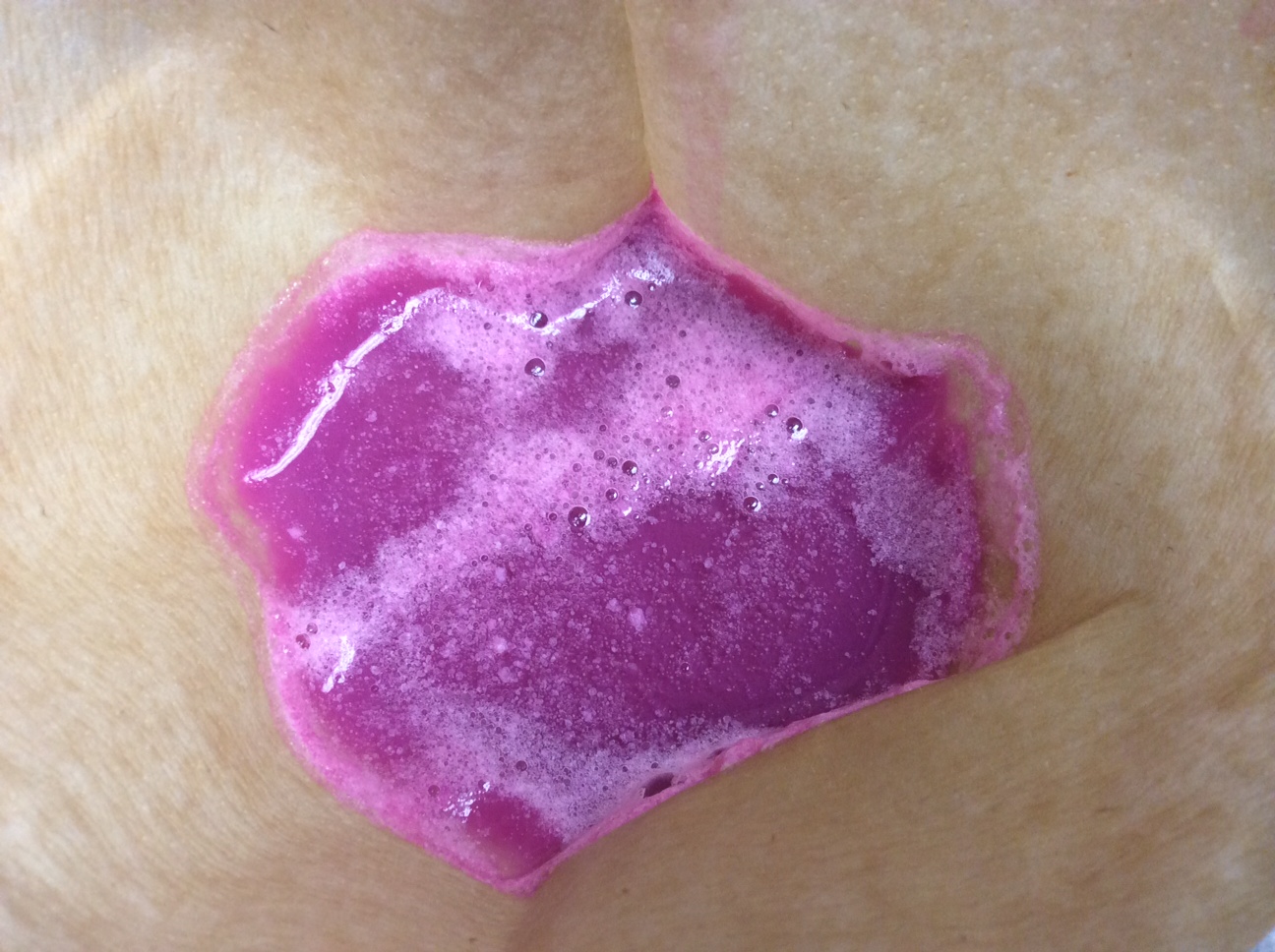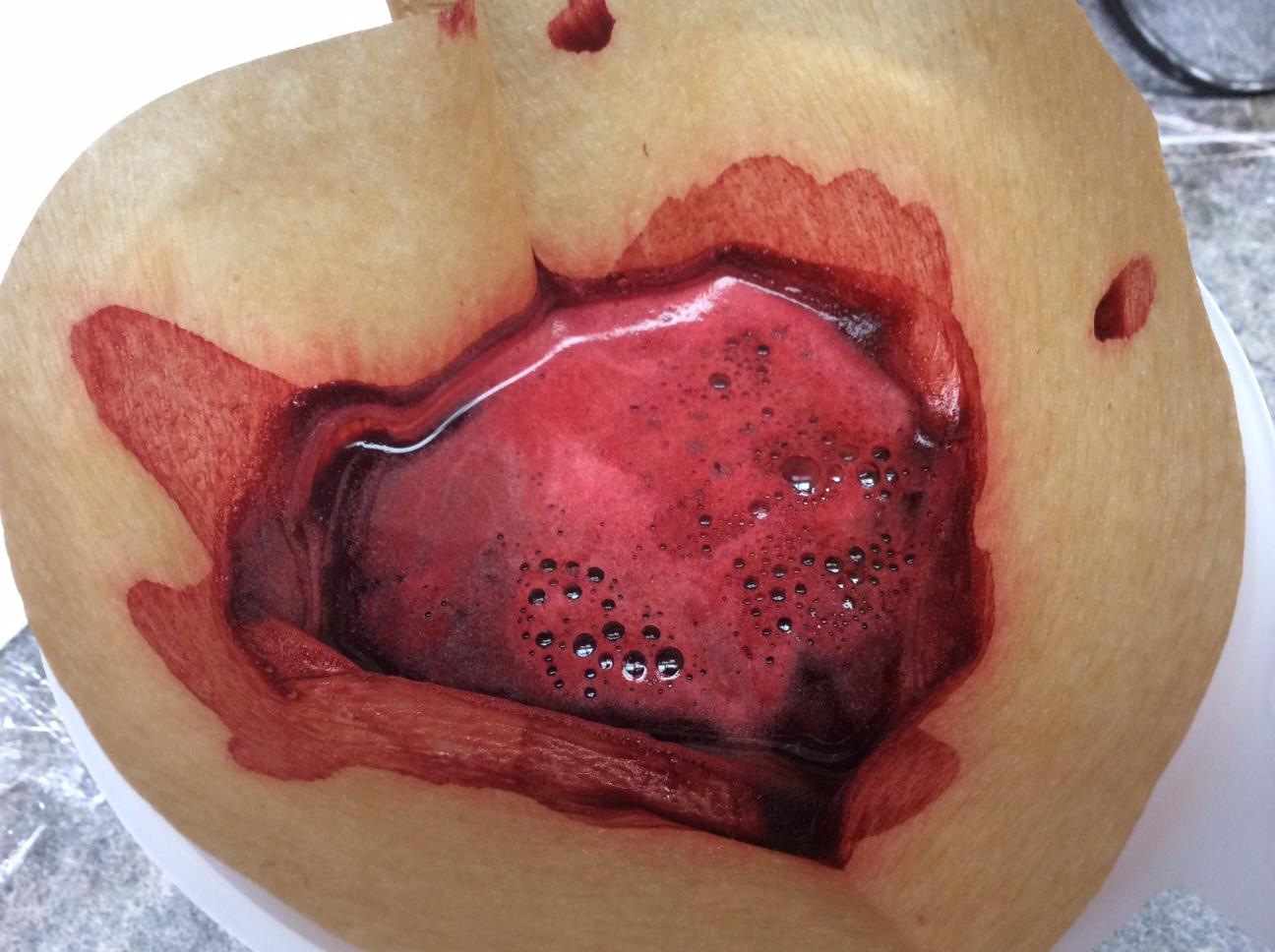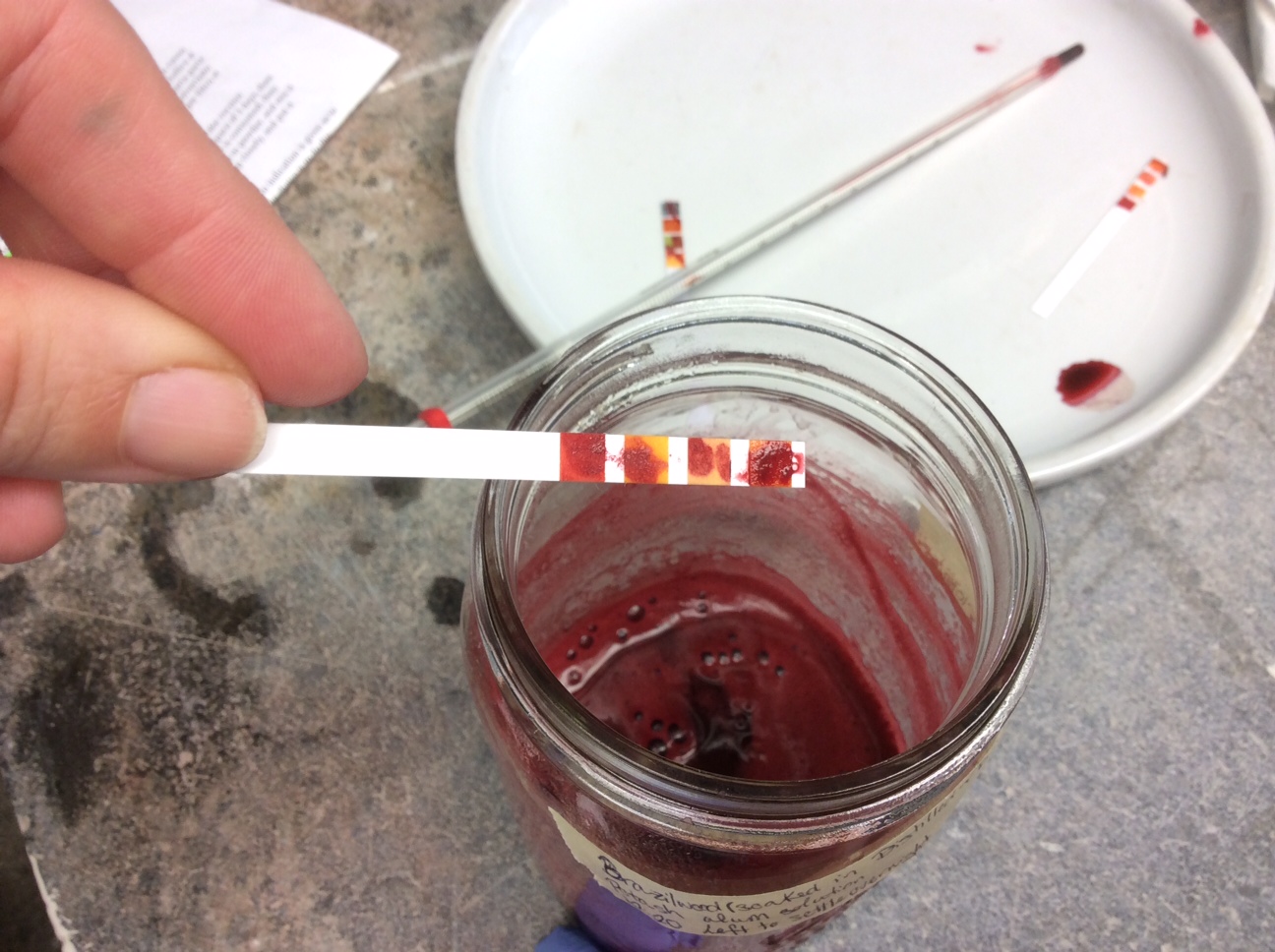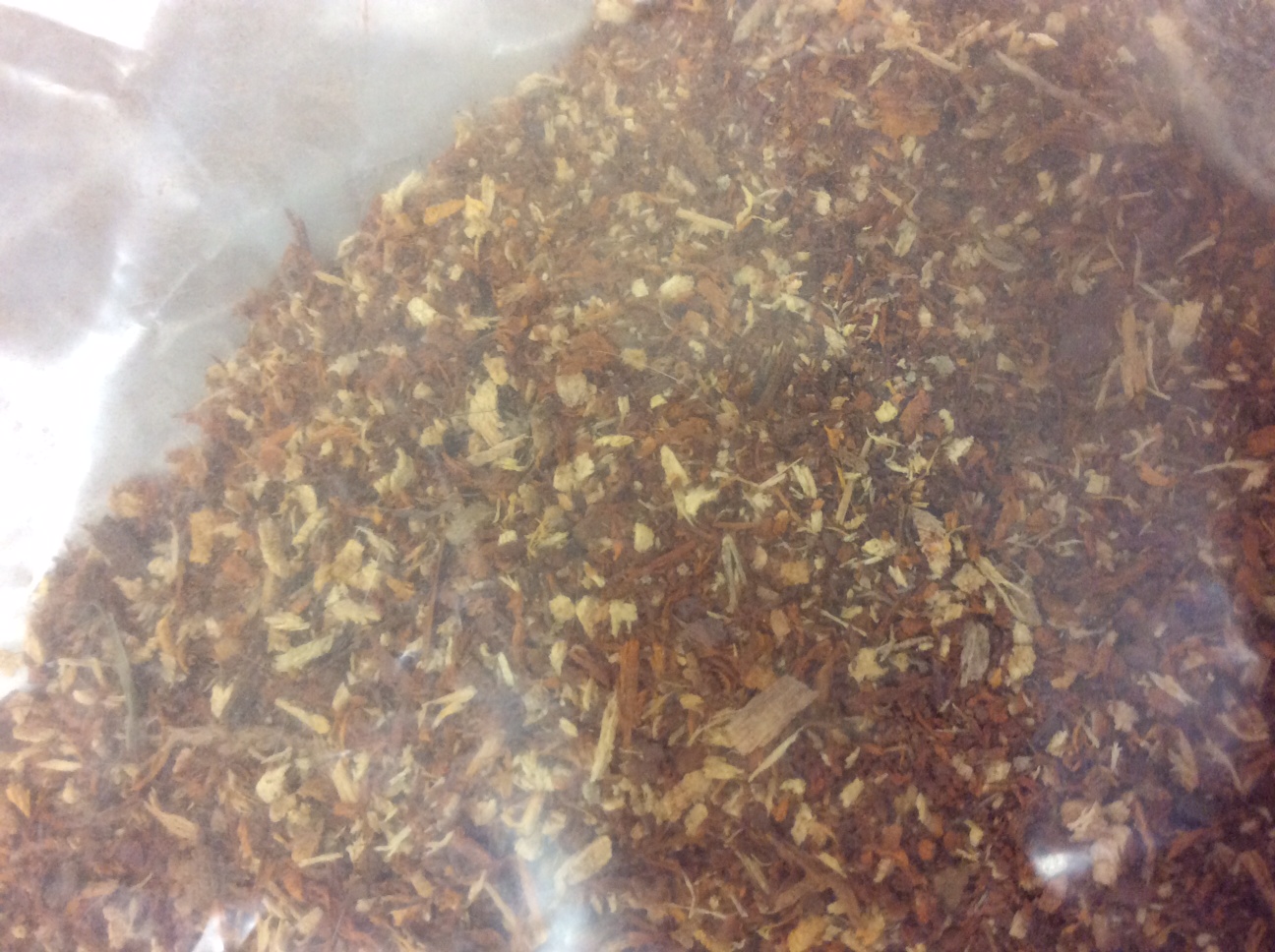Red Lake Pigments
Table of Contents
Date and Time
2015.10.19, 10:10 am
Location: Lab 216, with the Glasgow Technical Art History students (via Skype)Subject: Recipe for 0.24 g cochineal, 'Ricette per far ogni sorte di colore’ (from the Paduan Manuscript), no. 116; translation in Mary P. Merrifield, Original Treatises dating from XIIth to XVIIIth Centuries on the Arts of Painting, 2 vols, London 1849. 'Another sort of fine lake,' pp. 702–3
- Mixed the already grounded cochineal in a 500 ml beaker and added 300 ml of potassium carbonate solution
- Combined two cochineal and distilled water/potassium carbonate to boil for about 15–20 minutes, then filtered our 300 ml of the purple-red solution
- In the meantime, dissolved 10 g potash alum in 50 ml distilled water (by heating the small beaker gradually, so as not to break the glass)
- With the purple alkaline solution still warmed at 50 °C, added the alum solution gradually, stirring, until there is no further effervescence (though remained foamy for a while)
- Our pH was only 5, more acid than the recommended 6–7 (probably because I lost some solution when precipitating the beaker to the jar for filtering)
- The resulting color is a bright pink.
 |
| 2015_001fall_labsem_Estrades_cochineal_FA2015_1 |
Note: some cochineal was filtered that afternoon, others left overnight, and in the days to follow, they were washed several times until the filtrate was colorless. Once the precipitate is dried on the paper filters, the pigment can be removed from filter and collected
Name: Ana Estrades and Marilyn Bowen
Date and Time:
2015.10.19, 12 pm
Location: Lab 216 and Glasgow via skypeSubject: Brazil wood lake, from the Bolognese Manuscript: Merrifield 1849, Vol. 2, no. 120, To make a colour like grana with verzino, pp. 440–1.
- Boiled two polyester netting bags with the 10gr brazilwood shavings each (previously, each bag was soaked in 200 ml potassium carbonate solution, for 1-2 hours)
- We allowed them to boil somewhat gently for 15 minutes, checking that the volume had indeed reduced to less than 300 ml for the two bags
- Each team removed their bag and then filtered the solution hot
- Added 6 g finely powdered potash alum gradually to the hot solution, stirring thoroughly
- The ph was not possible to check, as the pigment dyed the ph strips (see photo)
- After letting it set for a 15 minutes, around 1:10 we filtered the Brazilwood, using coffee filters, liquid came slowly, and not clear, thus many washings would be necessary in the coming days.
- Sediment left in filter is of a very nice crimson color.


Note: Interesting to note the transformation of natural ingredients, in this case cochineal insects and brazil wood shavings (see photo below), into such beautiful and bright colors, as seen above.

Name: (Also the name of your working partner)
Date and Time:
2015.[Month].[Day], [hh]:[mm][am/pm]
Location:Subject:
ASPECTS TO KEEP IN MIND WHEN MAKING FIELD NOTES
- note time
- note (changing) conditions in the room
- note temperature of ingredients to be processed (e.g. cold from fridge, room temperature etc.)
- document materials, equipment, and processes in writing and with photographs
- notes on ingredients and equipment (where did you get them? issues of authenticity)
- note precisely the scales and temperatures you used (please indicate how you interpreted imprecise recipe instruction)
- see also our informal template for recipe reconstructions